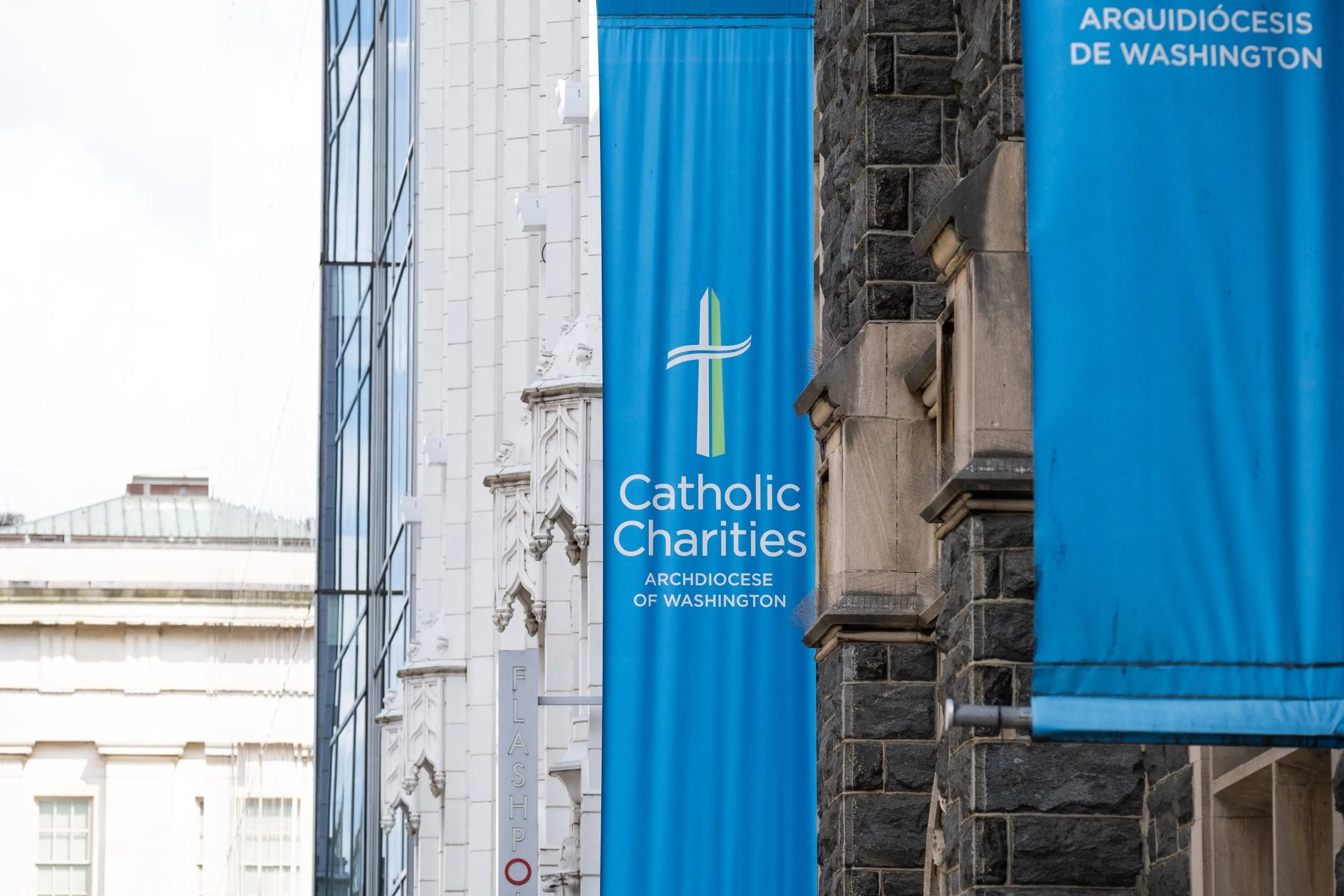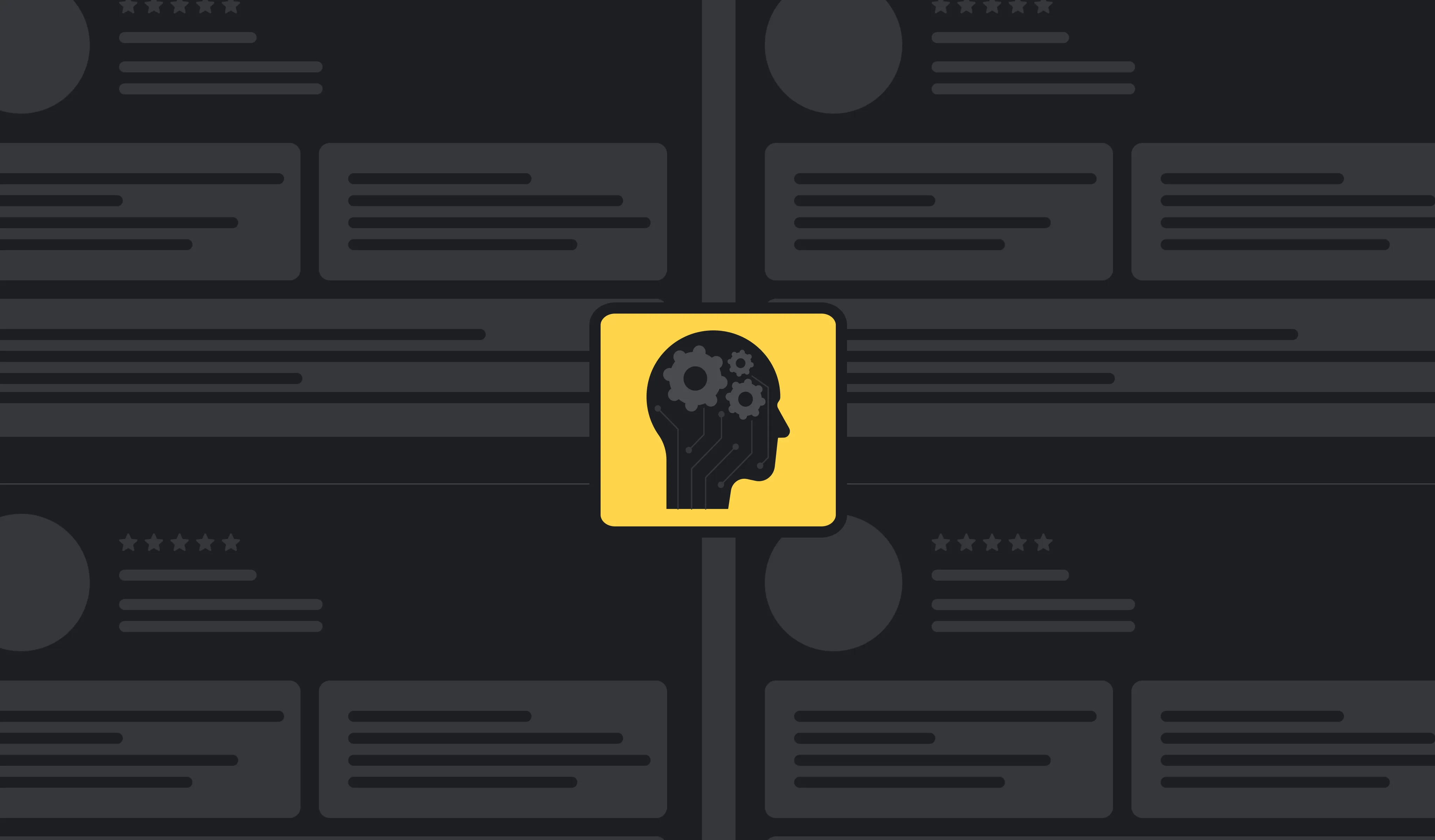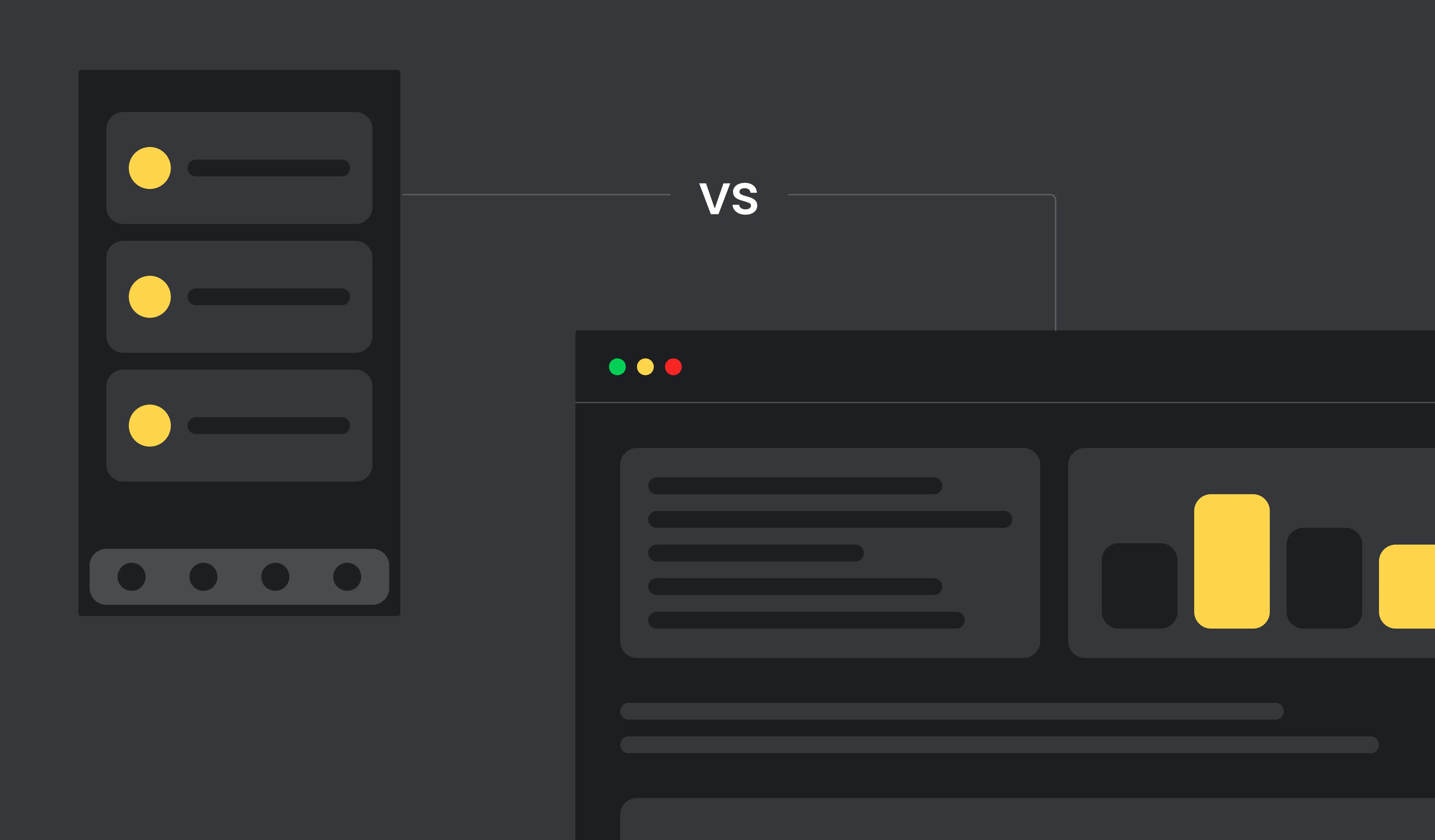Discovery is the first step of any project development. The goal is to collect information about the project to identify its vision, target audience, objectives, scope, and deliverables.
For large projects, discovery may take a few weeks to up to a couple of months. For some, the discovery phase seems to bring not as tangible deliverables as desired, but taking a closer look at the project failure stats helps to understand its importance.
In short, according to the Project Management Institute, more than 50% of projects fail.
How discovery helps on a large project
As a pre-project analysis tool, the discovery phase serves to:
- Identify project scope and goals;
- Improve estimates of time and budget;
- Make design decisions (wireframes, mockups);
- Reduce changes during later stages of the development process, preventing scope creep;
- Uncover hidden blockers and impediments.
You most likely need discovery if your project is:
- complex and multidimensional;
- valuable for your company, and will lead to visible losses in case of failure;
- large, and you don’t know where to start.

Getting started with the project discovery phase
To start off with the discovery stage effectively, it is good to have an overview of the entire process first. In IT projects, the discovery stage combines the technological and business aspects of the project.
Identify a business goal
It is good to have an overview of the entire process first to start off with the discovery stage effectively. In IT projects, the discovery stage combines the technological and business aspects of the project.
One of the well-known methodologies of goal setting is SMART.
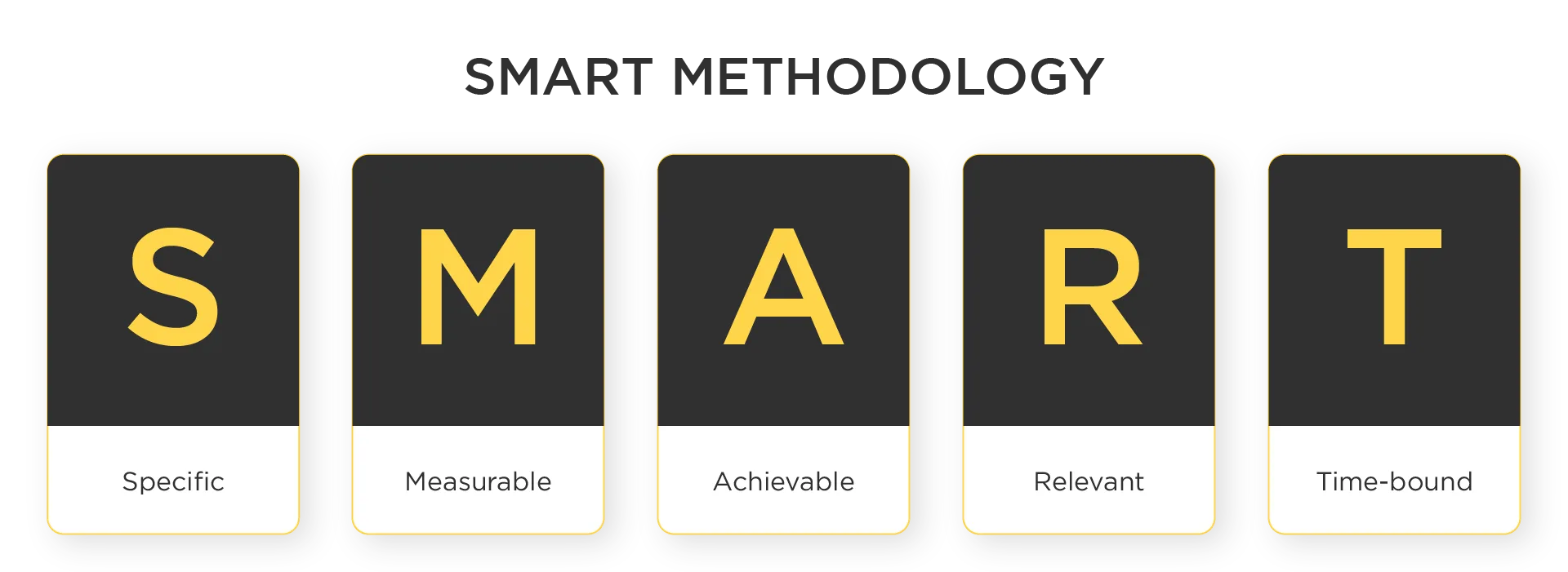
Getting started with the project discovery phase
To start off with the discovery stage effectively, it is good to have an overview of the entire process first. In IT projects, the discovery stage combines the technological and business aspects of the project.
Identify a business goal
It is good to have an overview of the entire process first to start off with the discovery stage effectively. In IT projects, the discovery stage combines the technological and business aspects of the project.
One of the well-known methodologies of goal setting is SMART.
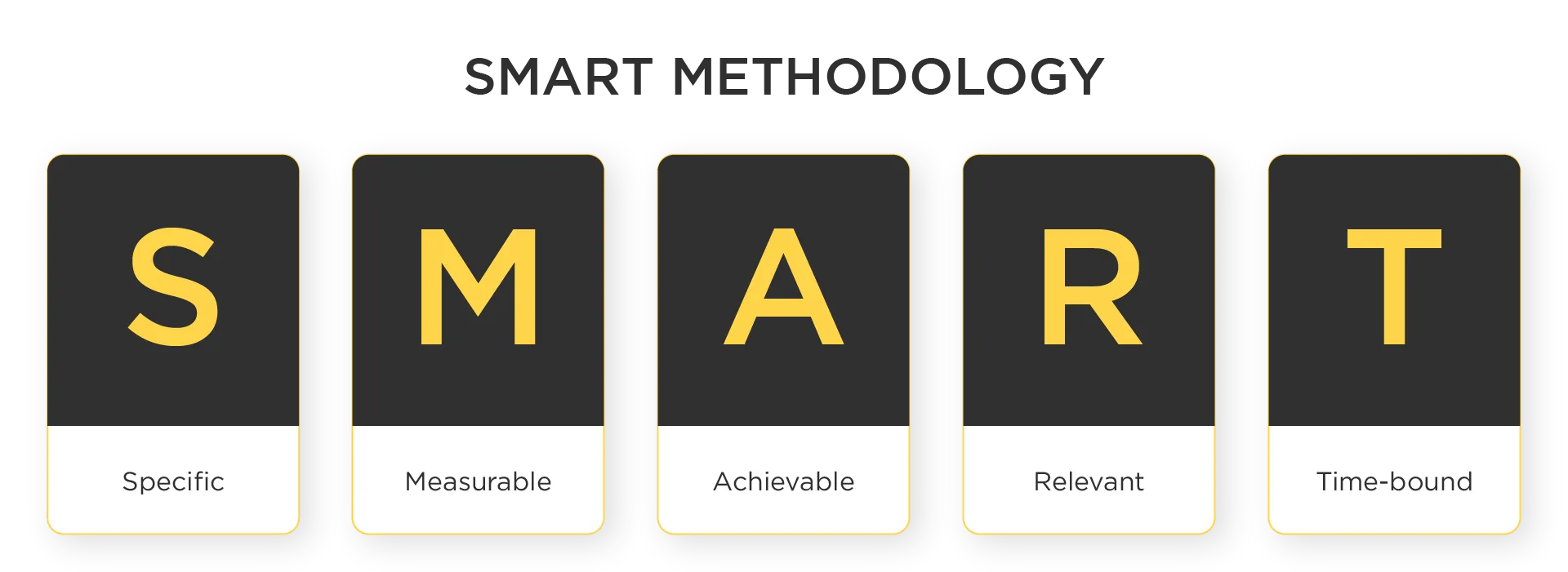
Set up a project discovery team
Usually, the team is four people: a development team lead, a project manager, a business analyst, and UI/UX designer.
Discovery sessions are meetings between the project teams on both sides: development and client.
The outcomes of these meetings are:
- Better knowledge of the domain area;
- Understanding of the client’s expectations;
- Uncovered bottlenecks;
- Draft high-level solutions;
- Project roadmap.
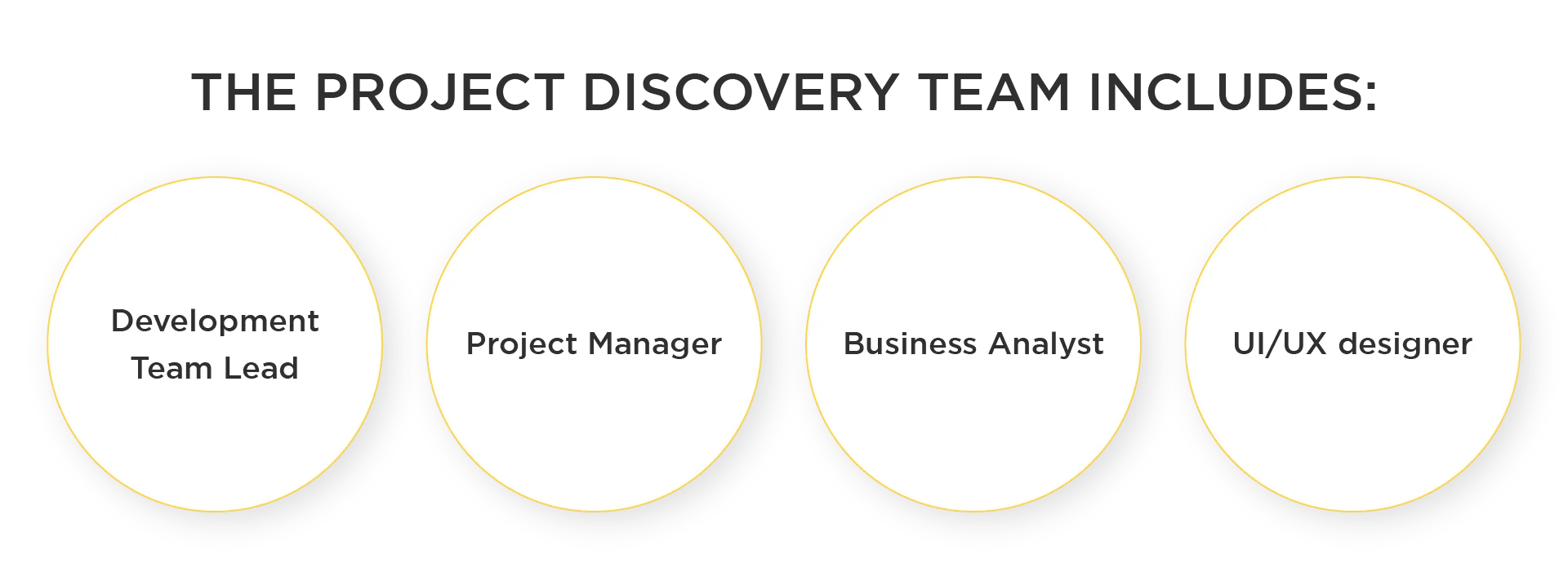
Perform discovery steps
- Competitor analysis. As a classical marketing tool, competitor analysis is an essential step before the project launch. Will it be the right fit at a given time for a given market?
- Analysis of the company. What is the current state of affairs in the company, and how the project outcome will influence it? Are there resources for the project?
- Definitions of stakeholders. Who are the interested parties and parties affected most by the outcome of the project? What are the roles and responsibilities of all of them?
- Conduct user research. Who will be the audience, and do they really need your offer?
- Plan user journeys. How many user roles will you serve? How will users interact with the product, and how to make their paths smoother?
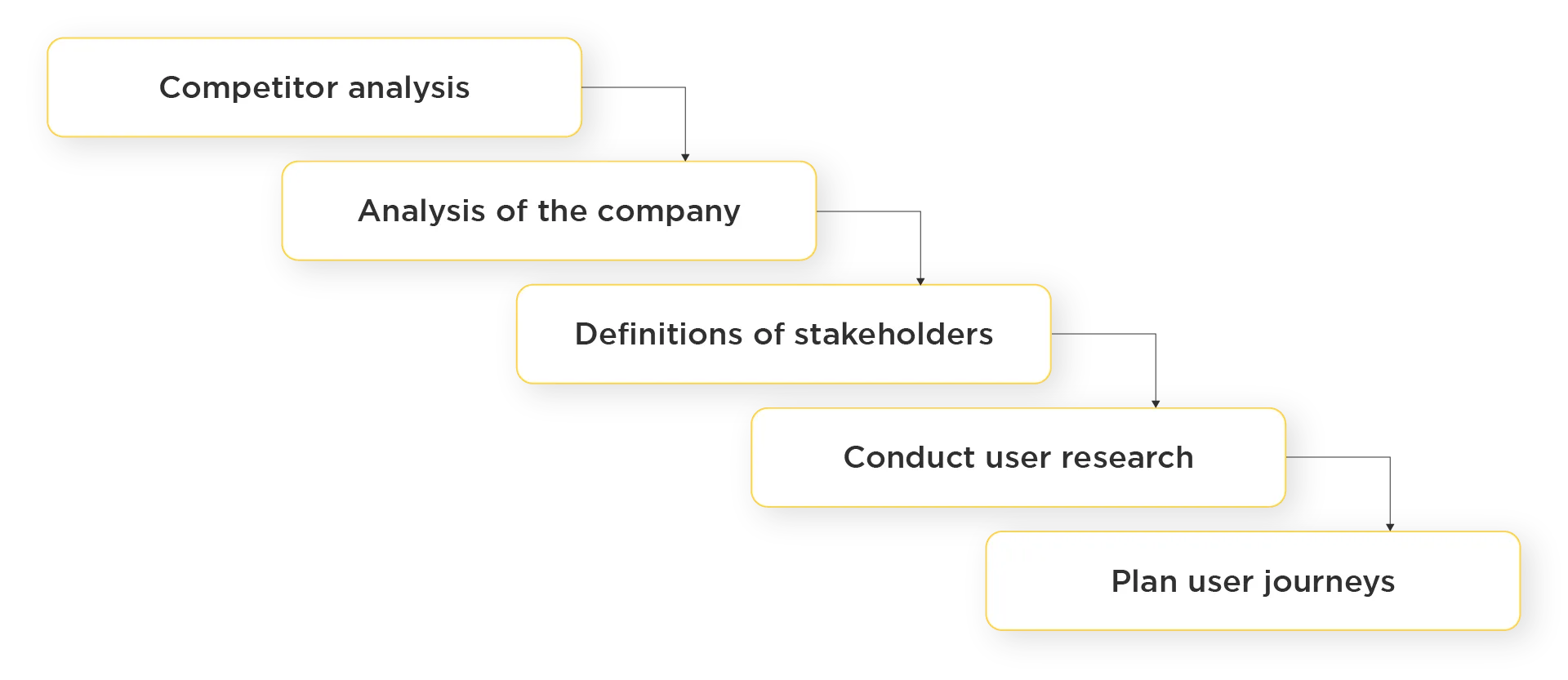
Understand your deliverables
Unlike common beliefs, the discovery stage does produce tangible deliverables to use along the project. Below are some of them.
Software Requirements Specification (SRS)
Software Requirements Specification (SRS) contains the product’s purpose, a description of the scope, and detailed requirements.
The discovery team may design this document in well-known formats, such as Microsoft Word and the specialized requirement software. The best tools for requirements design include:
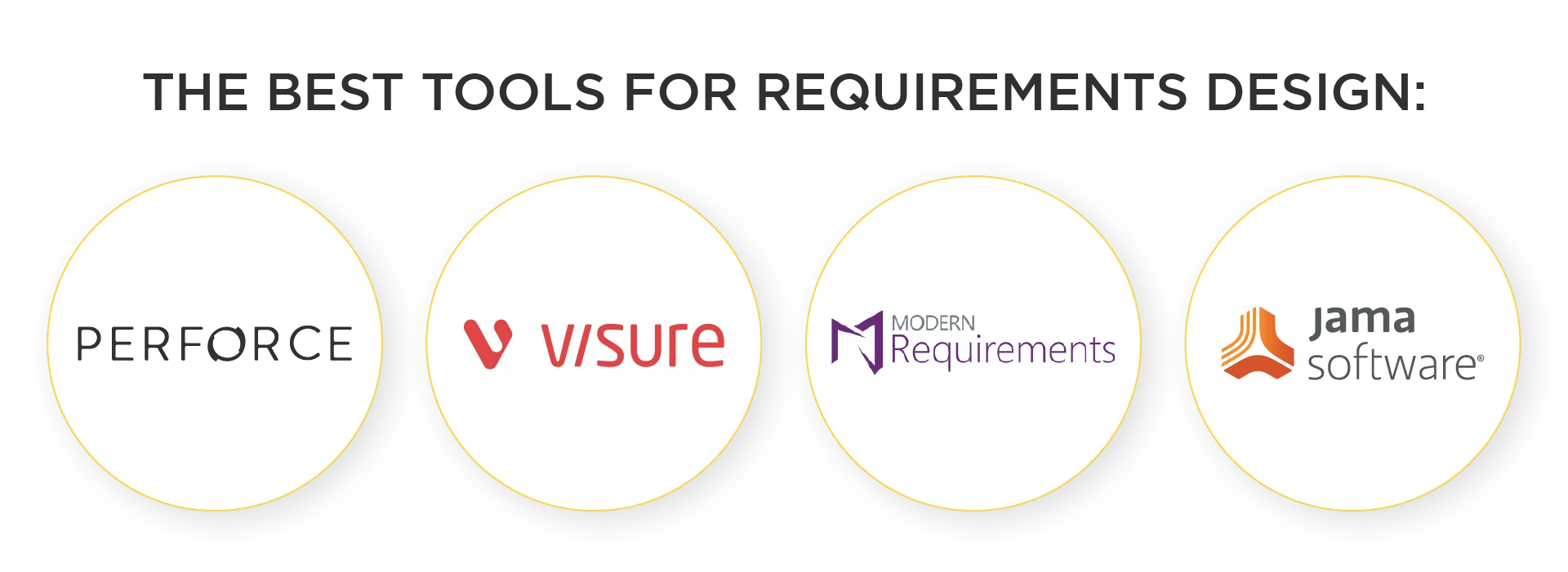
Top-level UX prototype
By the end of the discovery phase, the team will more likely come up with draft prototypes of the future web, mobile, or other products. The best prototyping tools include:
- Figma
- Adobe XD
- Sketch
- Proto.io
- Fluid UI
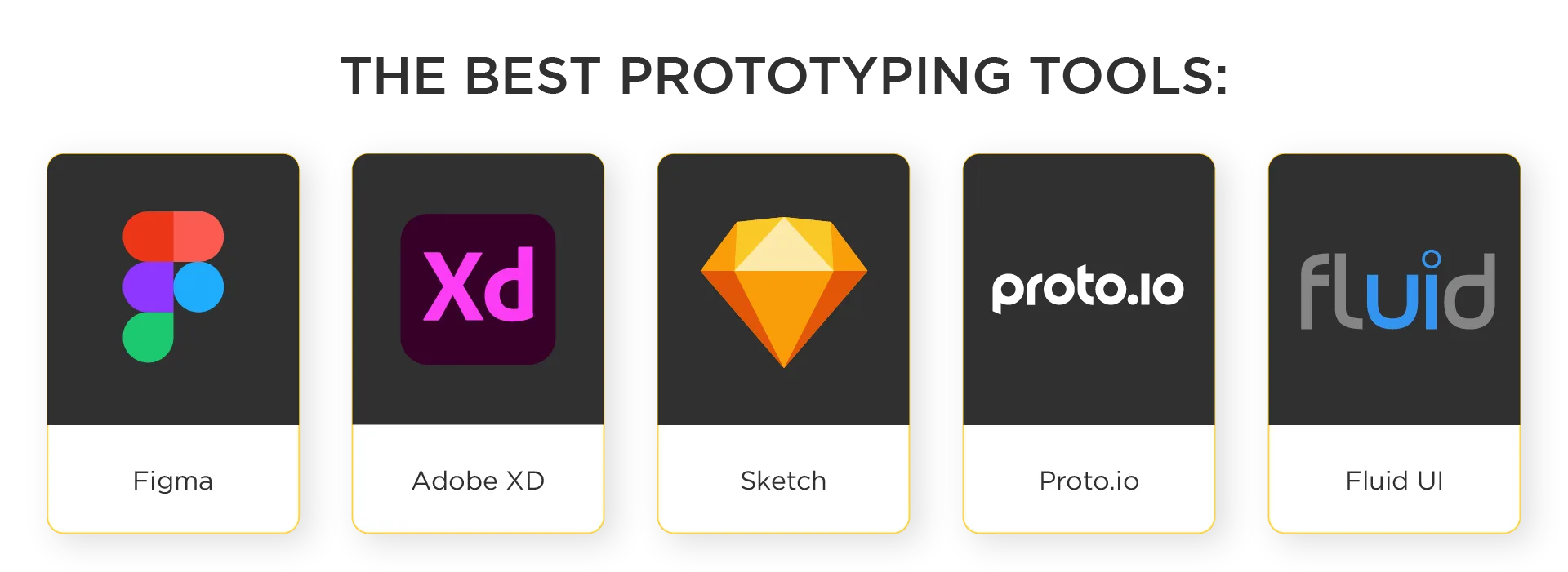
Top-level UX prototypes may include screens for multiple devices, browsers, use cases, and more. The clickable wireframes are a good tool for focus group research, as you can observe how your potential audience interacts with the prototype flawlessly.
Development estimates
There are several ways to perform an estimation of a large project. Although the estimation primarily helps to understand the right timing and budget of the implementation, it is an invaluable project planning tool, too.
The estimation document frequently includes a decomposition of the project scope with the top-level planned deadlines, costs, priorities, possible risks, etc. A wise decision-maker, a product manager, or any other specialist in charge will easily assess if all the features planned will be the right fit for the MVP.
Simply, by having an estimation at hand, the team may reconsider the initial scope of the project and spot the unnecessary functionality long before implementation.
Proposal
A project proposal is the final document of the discovery stage. It should reflect that the team is capable of delivering the product in accordance with the specification, prototypes, user needs, and other criteria.
The team will offer the appropriate tech stack, team size, qualifications, processes, and guarantees to facilitate the project’s quickest launch and success.
Conclusion
The discovery stage is a must-have for large projects, where you need to anticipate risks threatening many aspects of it, such as swollen budgets, scope creep, product-market fit, and more. Large project failure will more likely lead to a total investment loss, and the least managers can do to ensure returns on investment is not to omit discovery at the early stages of the project planning.
